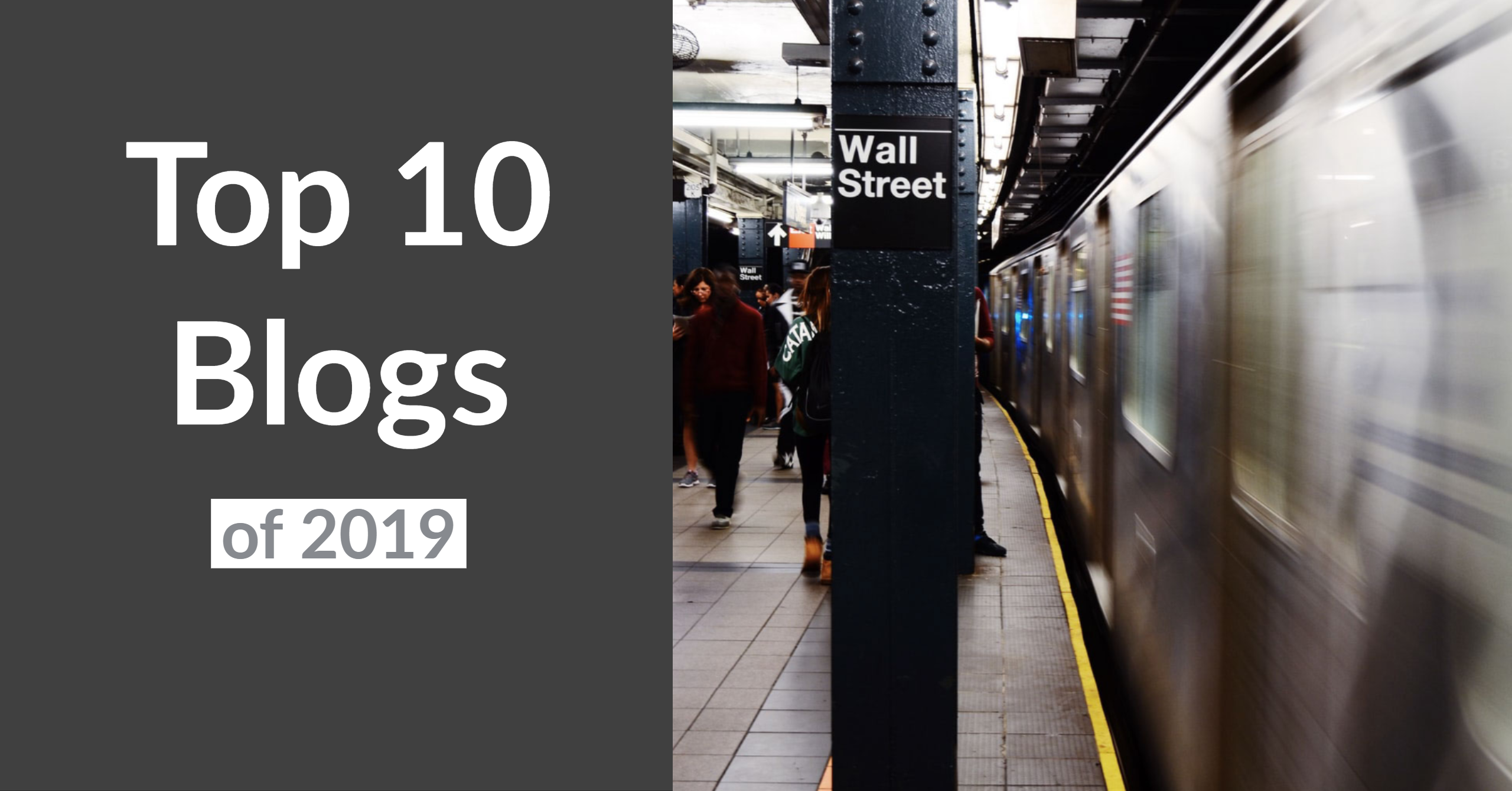A Year in Review: Top FlexAdvantage Blog Posts in 2019
December 19, 2019 | By: Ivy Schmerken

By Ivy Schmerken
Looking back at the fintech headlines, 2019 was a year in which the FlexAdvantage blog covered the emergence of new technologies, evolving market structure, and regulatory change in capital markets.
What were the issues that readers cared most about?
Topics such as market data costs, natural language processing, MiFID II research unbundling, Algo Wheels, exchange startups, market structure, dark pools, and desktop interoperability, among others, resonated with the readers of the FlexAvantage industry blog.
On the innovation front, trading desks invested in machine learning and natural language processing to filter through their unstructured data – emails, voice chats, and instant messages.
With reduced headcounts and commission pressures from the active to passive shift, firms were also concerned with pocketbook issues such as reducing market-data costs, automating more of their workflows through Algo Wheels, and building liquidity hubs for FX, and searching for corporate bond liquidity.
Given these trends, here is rundown of top FlexAdvantage blogs for 2019:
1. Consolidated Market Data Feeds Gain Traction in Algo Trading and Fixed Income

Broker dealers and high-frequency trading firms have complained about U.S. stock exchanges charging high fees for direct data feeds. But the business of consolidated market data feeds (operated by Refinitiv, Bloomberg, and ICE Data Services) is thriving.
In non-latency sensitive applications, consolidated feeds are being used in algorithmic trading, machine learning, and data analytics. Growth stems from fixed income and foreign exchange, as well as automated trading on the credit and rates sides.
2. Singapore Spurs Development of FX Trading Hubs Ecosystem

With the uptick in Asian currency trading, the Monetary Authority of Singapore is offering incentives to major banks and non-bank liquidity providers to build FX trading systems in the island nation.
The challenge is that orders created in Singapore are routed to FX matching platforms in Tokyo and London. To close the latency gap, XTX markets became the first non-bank liquidity provider to build a pricing and matching engine in Singapore.
3. Brokers Routing to Their Own ATSs Face Scrutiny

A FINRA working paper has raised concerns about broker order routing to affiliated alternative trading systems (ATSs), shedding light on order routing decisions and potential conflicts that can impact execution quality.
The major finding is that institutional orders routed by brokers that send a relatively high percentage of institutional orders through affiliated ATSs receive lower fill rates and higher execution costs.
4. MiFID II Research Unbundling Spread Uncertainty to U.S.

U.S. institutional asset managers were dealing with uncertainty around paying for research, while debating how to compete with global firms that have adopted MiFID II’s rules.
The SEC issued three no-action letters in 2017 allowing the sell side to accept a check from European clients without violating U.S. rules. Those no action letters expire in July of 2020. Buy-side and sell-side market participants debated the pros and cons of MiFID II’s research unbundling rules at the TABB equities 2019 conference in June.
5. AI: Natural Language Processing and the Battle for Unstructured Data

With digital transformation in full swing, trading desks are inundated with emails, voice calls and chat to process and analyze. Increasingly banks are turning to the field of natural language processing (NLP) and machine learning to extract valuable information from voice, documents, and audio to boost productivity on trading desks.
6. Bringing It All Together: Application Interoperability for Traders

Financial users are often accessing multiple applications on the desktop, toggling between different windows, clicking on buttons to analyze earnings on a security, graph the yield curve or search for inventory.
But moving data from one third-party application to another is not always seamless and user interfaces (UIs) are typically different. Billions of dollars have been spent on various integration initiatives, and yet the enterprise desktop is getting worse.
7. Exchange Landscape Gearing Up for Expansion in 2020

As a sign of the evolving U.S. equity trading landscape, two startups and one options exchange operator plan to launch as many as three new exchange platforms in 2020, and a fourth could be waiting in the wings.
Members Exchange (MEMX), Long Term Stock Exchange (LTSE), and Miami International Holdings, operator of the MIAX Exchange Group, plan to compete with incumbent stock exchange operators.
8. US to Study Effects of MiFID II Research Unbundling

U.S. lawmakers authorized a study focusing on the provision of investment research for small issuers, a sign they are wary of the U.S. adopting the European Union’s MIFID II unbundling rules which have brought sweeping changes to the research business.
The bill (HR2919), known as “Improving Investment Research for Small and Emerging Issuers Act,” will require the SEC to explore a broad range of issues. Reductions in research coverage for small and medium-sized companies has often been considered the “unintended consequence” of MiFID II’s unbundling rules.
9. Algo Wheels Spinning into Futures

Algo wheels have become a popular technology in equities trading, but now there are signs that algo wheels are expanding beyond equities into multiple asset classes such as futures. A recent study by Greenwich Associates estimated that 22 percent of clients are using algo wheels for as much as 36% of their order flow. An institution that is trading equities as a direct investment has an opportunity to bring the futures desk onto the wheel.
10. Bond Algos Tap into ETF Liquidity and Efficiency Gains

Algorithmic trading has picked up steam in the corporate bond market as fixed income trading desks appear to follow the playbook of equities. Corporate bond algos allow the buy side to respond to thousands of prices –request for quotes (RFQs)– sent by the brokers and then automatically execute on certain parameters. Experts maintain that electronic trading and corporate bond liquidity is closely tied with exchange-traded funds or ETFs.

How FlexTrade Can Help With Multi-Asset Trading and Your Buy-Side Execution Management System.
For a complete review of your firm’s approach to buy-side execution management and a demonstration of our Buy-Side EMS trading solutions, please contact us at sales@flextrade.com for further information.